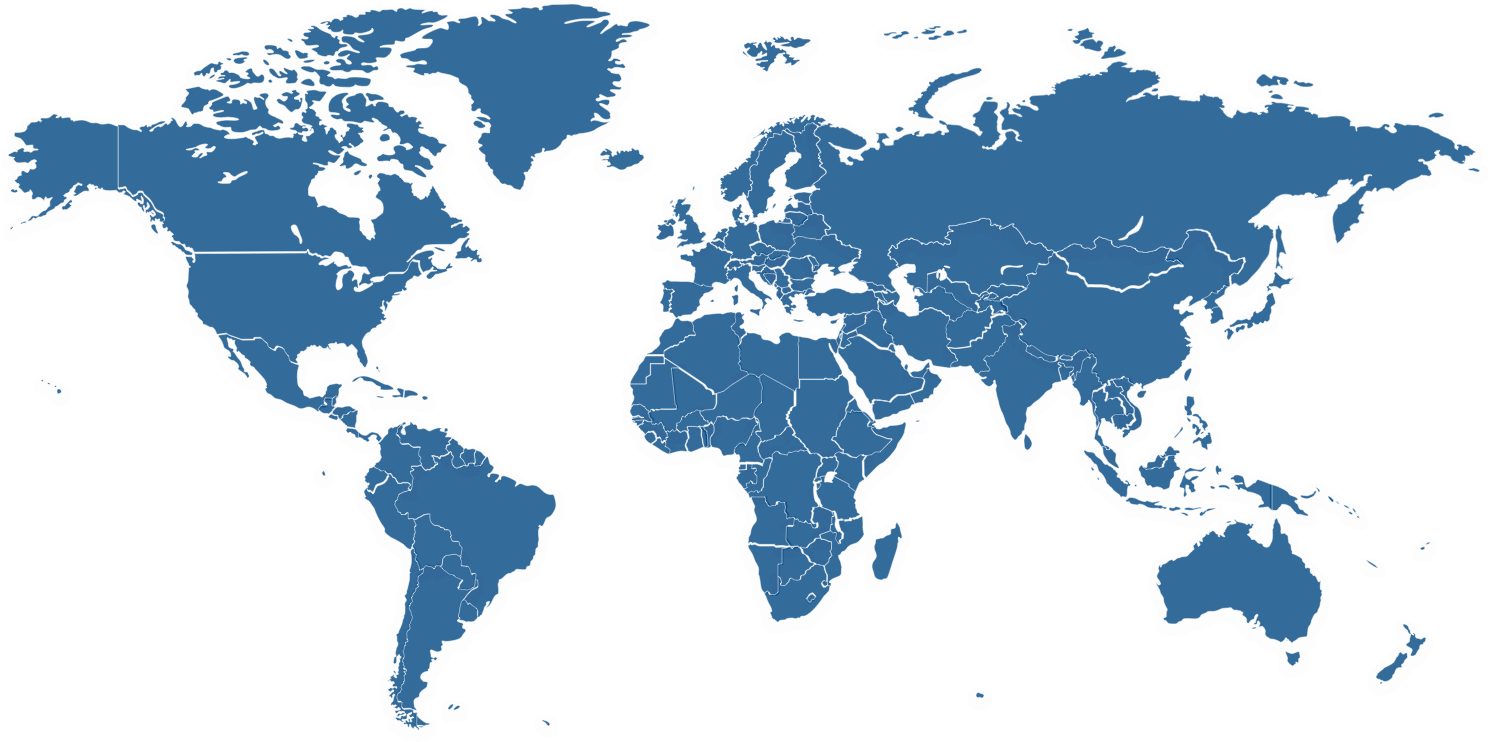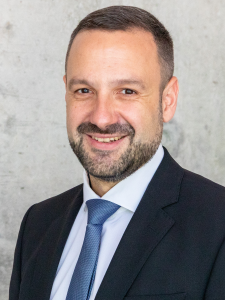Introduction
If we agree that when you decide to keep a cat in the house, its effectiveness could be judged by its ability to catch mice and keep the house “safe”, then logically we should not bother what name we assign to the cat, as long as it fulfills its role. Likewise, the nomenclature we assign to any attempt to keep, manage, restore, or build peace should not matter as long as such efforts are to achieve the goal at hand. However, with the effectiveness of peacekeeping now once again being debated, it is important and relevant to closely consider the relationship between what we call peacebuilding and what we call peacekeeping, understanding that our collective purpose from the beginning is to prevent and manage conflict, ensure that peace is maintained, and that sustainable development takes place. All efforts should be seen as one consolidated and interconnected process (and not whether the cat is green, blue, big, or small!).
Peacekeeping mandates often prioritize short-term goals, focusing on stabilizing immediate crises through targeted peacekeeping activities. This approach frequently leaves deeper systemic issues that fuel conflicts unaddressed. The stark reality before us is that, more often than not, peacebuilding, however it is defined, would appear to be mostly an afterthought, an add on, relegated to the background. Longer-term activities, i.e. peacebuilding aiming to tackle root causes, rebuild institutions, and support inclusive development, are too often viewed as a secondary phase, sometimes unnecessarily delaying the start of efforts aimed at building sustainable peace. Peacekeeping should be an integral element of peacebuilding, ensuring a strengthened ‘peacebuilding ecosystem’.
In recognition of this lacuna and cognizant of the need for a dedicated peacebuilding approach, the Peacebuilding Commission (PBC) was created by the twin resolution of the Security Council and General Assembly as a thirty-one-member political body with a mandate to ‘marshal resources’, political and financial, and ‘focus attention on [the] reconstruction and institution-building efforts’.
The Commission was also given an important advisory role to ensure that peacebuilding matters would be considered by the Security Council, the Economic and Social Council, and the General Assembly.
Ensuring peacebuilding is integrated into peacekeeping as well as special political operations ab initio, starting in the preparatory stages, in contextual analysis and at the mandating stage of a mission, is essential to contribute to achieving sustainable peace.
Peacebuilding is not a narrowly defined term, but rather encapsulates several instruments and processes, inclusive of the same tools used by peacekeeping, with the goal of consolidating and sustaining peace. In his latest report on peacebuilding and sustaining peace, issued in November 2024, the UN Secretary-General, Mr. António Guterres, indicated human rights – civil, cultural, economic, political and social – women and youth empowerment, climate resilience, and national capacity building for sustainable development, as essential and constitutive elements of peacebuilding and conflict prevention, while emphasizing the need to ground efforts in nationally owned initiatives.
These broad ideals, many of which are articulated in key frameworks such as A New Agenda for Peace, the Pact for the Future, and the Sustainable Development Goals (SDGs), define peacebuilding as a comprehensive effort to address the root causes of conflict, promote resilient and inclusive institutions, and foster sustainable development. In other words, peacebuilding is an amalgamation of all efforts to not only ensure that the peace is kept, as in silencing the guns, but immediately goes beyond that, recognizing that conflict is to be prevented, peace is to be consolidated, and development processes to be enabled for a truly durable peace over time.
Yet, the gap between this vision and the scope of the mandates of a number of current peace operations remains significant. Beyond focusing on maintaining stability, a peacebuilding approach calls for a shift towards prevention, resilience, and inclusivity, with a strong emphasis on national ownership. As global challenges deepen and grow increasingly interconnected, reimagining peace mandates to embed peacebuilding principles early in the process is not just desirable—it is imperative for long-term, lasting stability.
Evolution: Liberia, South Sudan, Sudan
Let us consider the evolution of UN peacekeeping operations to illustrate the argument above. I have chosen three examples of peacekeeping missions with which I am personally familiar.
In Liberia, the civil war started in December 1989, and initial responses from the international community, particularly ECOWAS, did not fully integrate peacebuilding objectives into their approach to the conflict. In fact, I make bold to say that peacebuilding was completely not thought of or even existed as a concept then. Let’s fast forward to the peace agreement of 1995 and beyond, and the relative peace that ensued. In 1997 the UN established a Peace-Building Support Office in Liberia (UNOL) to promote national reconciliation and good governance and mobilize international support for reconstruction and development programmes. While UNOL contributed to these efforts, a more integrated humanitarian, development, and peacebuilding approach, with greater national ownership, could have strengthened its impact. When the Security Council approved the deployment of the UN Mission in Liberia (UNMIL), UNOL was phased out, and peacebuilding efforts became less prominent alongside peacekeeping operations.
In spite of UNOL’s shortcomings, at least the right nomenclature and ‘Peacebuilding’ approach was applied. A continued presence of a peacebuilding focus within a peacekeeping mission, even in challenging and complex environments, could have promoted peacebuilding efforts led by national actors, including civil society actors, and sustain international attention to Liberia’s long-term peacebuilding needs. A continued presence of peacebuilders in Liberia could have mobilized political and financial support for initiatives on the ground and supported inclusive dialogues to contribute to stability and sustainable peace. While UNMIL’s 2006 benchmarks (S/2006/743) included peacebuilding-related goals, the Security Council did not establish clear mechanisms for their implementation, making it difficult to track concrete progress. The focus was largely on elections at the expense of the larger trajectory towards political and social stability, cohesion, reconciliation, peace, and development. Although international engagement supported stability, more sustained peacebuilding engagement by the international system might have better consolidated peace gains, whilst noting the immense support of the PBC to Liberia at that time and up till now, demonstrating the ongoing relevance of the Peacebuilding Commission.
Over time, approaches to peacekeeping have certainly evolved to better incorporate peacebuilding, though further progress is needed. The UN Mission in South Sudan (UNMISS), established in 2011 as South Sudan emerged as an independent state, represents a step forward in this regard.
Unlike the 2003 resolution which established UNMIL, the Security Council resolution explicitly incorporated peacebuilding into the UNMISS mandate, calling for close collaboration with the South Sudanese government to align international assistance with national peacebuilding priorities. This is a definite improvement reflecting recognition of the need for integrated peace operations that support sustainable peace from the outset.
To the credit of the UN system, including its personnel, it is important to note that whether or not there is an explicit peacebuilding mandate, the system does function in ensuring that activities to build peace are encouraged and carried out. For example, at the United Nations Interim Security Force in Abyei (UNISFA-Sudan) which engages in the implementation of peacebuilding initiatives with tangible results such as social protection, women and youth empowerment, social cohesion, and development. In 2015, the mission facilitated the creation of a “common market” with the aim of easing tensions between rival ethnic groups. This economic exchange not only reduced tensions but also fostered dialogue, highlighting how trade and local engagement can serve as peacebuilding tools.
In their comprehensive report on ‘The Future of Peacekeeping, New Models, and Related Capabilities’, the former Special Representative of the Secretary-General to the United Nations and Head of the Multidimensional Integrated Stabilization Mission in Mali (MINUSMA) Mr. El-Ghassim Wane, Professor Paul D. Williams, and Professor Ai Kihara-Hunt arrived at one fundamental conclusion : ‘there is a strong link between peacekeeping and the broader prevention and peacebuilding agendas, as well as the Agenda 2030 for Sustainable Development’. ’This perspective is evident in the most recent Security Council renewal of the UNMISS mandate (S/RES/2729 (2024)), which encourages South Sudan to engage with the UN Peacebuilding Commission and emphasizes inclusive peace processes, transitional justice, and fostering open civic spaces. As these examples illustrate, the next step is to further operationalize this integrated approach, ensuring that peacekeeping, as well as other peace operations, consistently lay the groundwork for sustainable peacebuilding. We need to operationalize this linkage across the entirety of the UN system and in the UN’s cooperation with other stakeholders.
UN Peacebuilding Architecture
The United Nations’ Peacebuilding Architecture represents a robust ensemble of tools to ensure that a peacebuilding lens is applied across the UN system. The United Nations Peacebuilding Commission (PBC), an intergovernmental advisory body focused on conflict prevention, post-conflict recovery, and long-term peacebuilding strategies, is the cornerstone of this peacebuilding architecture, which also includes the Secretary-General’s Peacebuilding Fund (PBF) and the UN Peacebuilding Support Office (PBSO) led by Assistant Secretary-General Elizabeth Spehar.
In addition to its mandate to ‘marshal resources’ and ‘focus attention on [the] reconstruction and institution-building efforts’, the Commission was also given an advisory role to ensure that peacebuilding matters would be considered at other UN bodies, such as the Security Council. In this way, the PBC is supposed to complement peacekeeping and peacemaking efforts by addressing the foundational and institutional needs required to build and sustain peace. Of course, our peacebuilding architecture is by no means perfect. The relationship between the Peacebuilding Commission and the Security Council must be improved, in order to enhance the impact of the Commission’s advice and ensure a meaningful consideration of its recommendations. The 2025 Review of the Peacebuilding Architecture that will soon be initiated by member states with the co-facilitation of Egypt and Slovenia, provides an ideal opportunity to achieve this goal by re-evaluating ways in which the Commission and other peacebuilding mechanisms operate within the UN system.
The Peacebuilding Commission should play a stronger role in the establishment, sustainability, and draw-down of peacekeeping missions. In recent years, it has expanded the geographic scope of its engagements and strengthened partnerships with international financial institutions (IFIs) like the World Bank, the International Monetary Fund, and the African Development Bank. It has also emphasized the need for sustained, predictable, and flexible funding for nationally owned peacebuilding efforts. Additionally, the PBC has increased engagement with local and regional voices by incorporating women and youth civil society representatives into nearly all meetings. While these are significant strides, more can be done to ensure peacebuilding is consistently integrated across the UN system. This year’s review presents an opportunity to address these fundamental issues.
Some concluding thoughts
In conclusion, let us examine some thoughts on what peace mandates for long-term stability with a peacebuilding vision/value/philosophy could look like.
I propose for consideration that peacebuilding should not be an afterthought; it must be integrated into the mandate of peace missions ab initio, from the outset. This means ensuring that peacebuilding experts, local actors, and development practitioners are present in negotiation rooms and in mandating missions, alongside political and security actors. The UN can help structure peace negotiations in phases, prioritizing root causes and efforts to sustain peace, to ensure agreements are comprehensive.
Second, peace agreements are too often designed with the immediate goal of stopping violence but without a long-term vision for sustaining peace. Ceasefires, support to elections, and peacekeeping missions themselves are also prone to unravel if they fail to properly consider national and cultural contexts. Agreements must be nationally owned and grounded in binding commitments to sustainable peacebuilding decisions and action. As we have seen in so many contexts, the real work of sustaining peace goes much beyond forging a political agreement — as important as that is — and signing a piece of paper.
Third, one of the most common pitfalls in peace operations is mistaking elections as a panacea for peace. Often, years of peacekeeping missions are assumed to teleologically lead to elections and that all is now well. Elections are often rushed as part of exit strategies, yet holding elections in an unstable environment can deepen divisions rather than heal them. A successful transition, i.e., successful peacebuilding, requires a strategy that prioritizes institution-building, economic recovery, and social reconciliation, above political competition and elections. Ultimately, peace cannot be externally imposed; local and national actors as well as regional organizations and must drive the process, with the UN providing support and leverage.
Success in peacebuilding is not a singular moment—it’s a process, which is unique to each context in which it is pursued. Measuring success requires long-term benchmarks that take years to build, and we must prepare to be in for the long haul. It is therefore clear that, when reimagining peace mandates, the imperative of long-term stability and development requires peacebuilding to be at the core of UN peace missions, from day one.
About the Author
Olu Arowobusoye is the Chief of the Peacebuilding Commission Support Branch at the United Nations DPPA/PBSO. Mr. Arowobusoye has extensive experience in peace and security, political and humanitarian affairs, peacebuilding, diplomacy, and development, as a former career diplomat, staff of various UN peacekeeping missions, the African Union and ECOWAS.
The opinions stated in the article are those of the author alone, and do not necessarily reflect those of the UN or its Member States.




